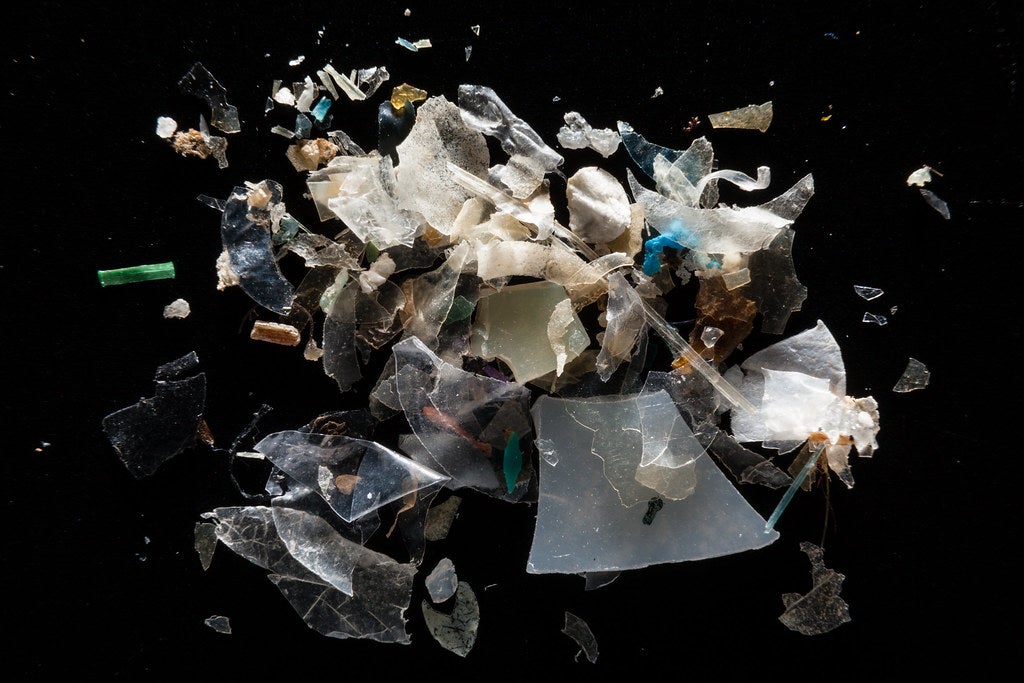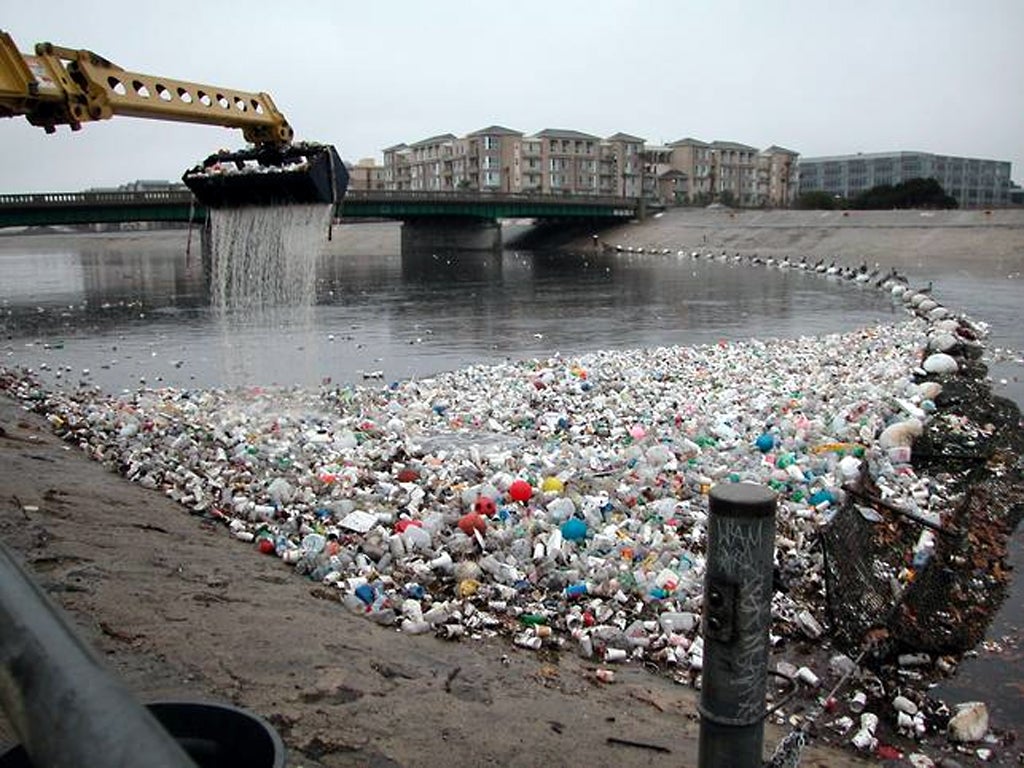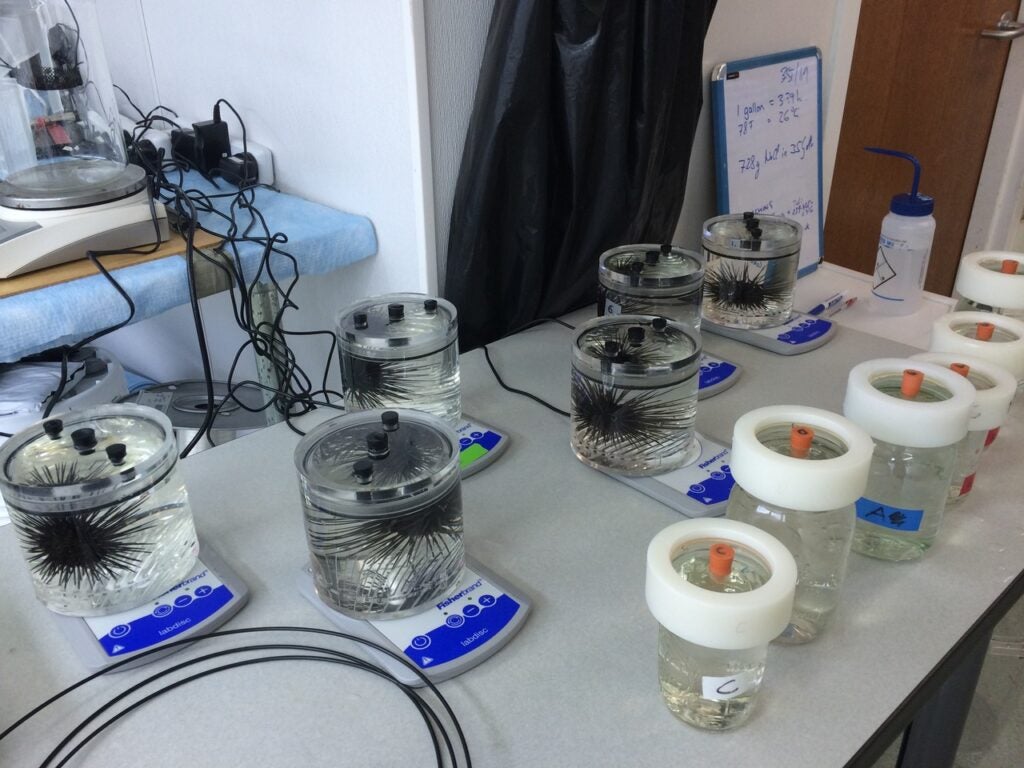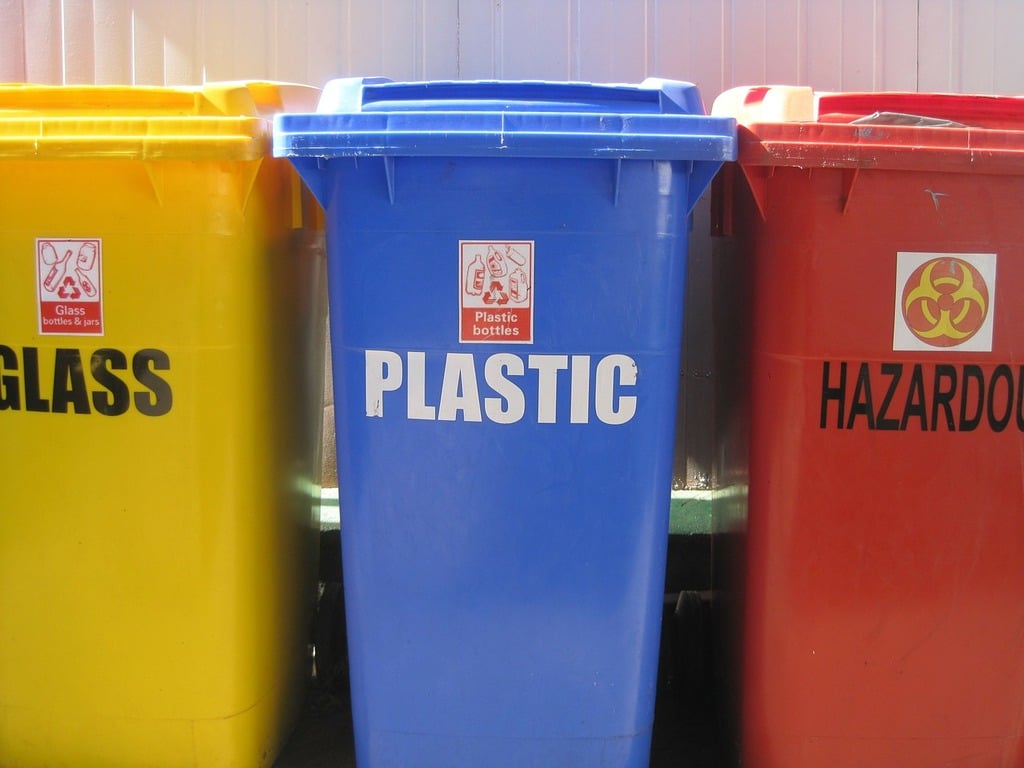The URI Plastics REU Site allows students to dive into four dynamic research areas for the 2025 program. These projects are part of well-established, ongoing studies, ensuring you’ll contribute to meaningful work from day one. As an REU student, you’ll explore cutting-edge solutions to the global challenge of plastic pollution while gaining hands-on experience in interdisciplinary research. Each project is designed to broaden your perspective and equip you with valuable skills for future STEM careers. The projects you’ll get to explore include:
Focus Area 1. Novel Tools for Detecting Plastics from Macro to Nanoscales

Developing and refining innovative methods for identifying plastics at various scales, from visible debris to microscopic particles, is a critical step in understanding the full scope of plastic pollution. As an REU student, you’ll have the chance to work on cutting-edge technologies and methodologies to enhance detection capabilities. You’ll be part of a team advancing research in this field, learning how to apply innovative tools to track and analyze plastics. This will help inform effective strategies for reducing pollution. This project will immerse you in hands-on research with real-world impact, preparing you to contribute to solving one of today’s most pressing environmental challenges.
1.1. Developing an Optical Microscopy Method to Detect Microplastics in Environmental Samples
Lead: Ryan Poling-Skutvik, Chemical Engineering
Summary: This project aims to develop a method using differential dynamic microscopy (DDM) to identify and characterize microplastics in environmental samples. The technique seeks to determine microplastics’ size, density, and chemical composition in situ without requiring complex sample preparation. The method involves tracking interference patterns of microparticles to quantify their properties, allowing high-throughput and cost-effective analysis of microplastics in coastal water samples.
1.2. High Throughput Detection, Quantification and Morphology Analysis of Microplastics
Lead: Irene Andreu, Chemical Engineering
Summary: This project explores the use of X-ray microscopy to detect and analyze microplastics in sediment samples. Unlike traditional methods that require laborious separation processes, X-ray microscopy can analyze sediment cores directly, differentiating microplastics based on their atomic composition. This method provides a high-throughput, low-effort alternative for microplastic quantification and morphology analysis.
1.3 Unraveling the Degradation of Plastics: Towards Accurate Identification of Microplastics
Lead: Yang Lin, Mechanical Engineering
Summary: This project investigates the degradation of microplastics using vibrational spectroscopy and AI to improve their identification. By expanding spectral databases with data from artificially degraded microplastics, the project aims to enhance the accuracy of AI models in identifying microplastics regardless of their degradation stage. The work involves controlled degradation experiments and advanced data analytics to refine identification techniques.
1.4 In-line Separation, Visualization, and Enumeration of Microplastic in Environmental Waters
Lead: Brice Loose, Oceanography
Summary: This project evaluates microfluidic technology for identifying, counting, and visualizing microplastics in water, particularly in Narragansett Bay. By using flow cytometry and acoustofluidics, the project aims to improve the separation and analysis of microplastics, especially those smaller than 50 μm. The work includes designing and testing new methods for in-line separation and detailed visualization of microplastics in aquatic environments.
Focus Area 2. Removal and Recycling of Plastics

Tackling the widespread problem of microplastics in aquatic environments, this project focuses on developing and optimizing innovative techniques to effectively remove these contaminants from wastewater and seawater. As an REU student, you’ll be directly involved in experimental and applied research to reduce microplastic pollution at its source. You’ll work on cutting-edge filtration and removal technologies, gaining hands-on experience in laboratory experiments and field applications. This project provides an exciting opportunity to contribute to real-world solutions for a critical environmental issue, preparing you for future challenges in environmental science and engineering.
2.1 Removing Plastic Particles from Wastewater with Chitosan and Dissolved Air Floatation Lead: Joseph Goodwill, Civil and Environmental Engineering
Summary: This project addresses the growing environmental challenge posed by the coexistence of microplastics and micropollutants in water. Both contaminants are pervasive in aquatic environments and pose significant risks to ecosystems and human health. The project will explore innovative technologies for removing these pollutants, focusing on novel adsorption techniques and advanced oxidation processes. By deploying these approaches, the project seeks to develop effective, efficient, and scalable solutions to mitigate the impacts of microplastics and micropollutants, ultimately improving water quality and environmental sustainability.
2.2 Environmental Risks Associated with the Use of Plastic Waste in Construction Bricks or Other Products in Small-Scale Recycling Plants: Vinka Oyanedel-Craver, Civil and Environmental Engineering
Summary: This project explores the use of plastic waste in the manufacturing of bricks or other construction materials through mechanical recycling processes. As an REU student, you will have the opportunity to study and conduct experiments on the manufacturing process, focusing on identifying potential emissions and environmental risks involved. By working on this project, you will contribute to closing the knowledge gaps surrounding the environmental impacts of recycling plastic waste into construction materials. Your research will help develop safer and more sustainable solutions for managing plastic waste, advancing efforts to reduce its harmful effects on both the environment and human health.
Focus Area 3. Ecological and Human Health Plastics Impacts.

These projects investigate the far-reaching impacts of plastic pollution on ecosystems and human health, aiming to deepen our understanding of plastic contaminants’ biological and toxicological effects. As an REU student, you will participate in studies exploring how plastics interact with living organisms, including wildlife and marine life, and assess the potential health risks these pollutants pose to humans. Through hands-on research, you’ll contribute to uncovering the hidden dangers of plastic pollution and gaining insights into environmental toxicology and its implications for public health. This experience will equip you with the knowledge and skills to address some of our time’s most pressing ecological challenges.
3.1. Expanding Our Knowledge on How Benthic Marine Invertebrates Interact with Microplastics
Lead: Coleen Suckling, Fisheries, Animal and Veterinarian Sciences
Summary: This project examines how benthic marine invertebrates interact with microplastics in the seabed. It focuses on measuring ingestion, retention, and egestion rates of different microplastic types. The study uses controlled laboratory trials to understand how various factors influence the interaction between marine organisms and microplastics, providing insights into the ecological impact of microplastic pollution.
3.2. Investigating the Inflammatory Effects of Microplastics Using Liver Microphysiological Systems Lead: Jyothi Menon, Pharmacy, Chemical Engineering
Summary: This project investigates microplastics’ toxic and inflammatory effects on liver cells using liver microphysiological systems (MPS). By mimicking the cell-cell interactions and structural arrangements in the human liver, this research aims to elucidate how microplastics influence liver cell behavior. The study will involve developing advanced tissue-engineered liver models through techniques like 3D bioprinting. These models will then assess cellular uptake and inflammatory responses to microplastics, providing valuable insights into their potential health impacts.
Focus Area 4. Societal and Economical Interventions to Plastics Pollution

These projects center on the societal and economic dimensions of plastic pollution, examining behavioral, policy, and economic strategies to reduce plastic waste. As an REU student, you will explore a range of interventions, from initiatives that influence consumer behavior to the design of economic incentives, all aimed at curbing plastic pollution. You’ll engage in research that considers the role of policies, industries, and communities in addressing this global issue, developing a deeper understanding of how to create comprehensive and sustainable solutions. This experience will provide valuable insights into the intersection of environmental science, economics, and public policy, preparing you to make an impact in solving the plastic waste crisis.
4.1 A Design Process and Marketing Practices for a Circular Textile Economy
Lead: Karl Aspelund, Textile, Fashion Merchandising and Design
Summary: This project focuses on creating design solutions and marketing strategies for a circular textile economy. It aims to shift consumer culture towards sustainable textile production and use. The study involves researching lifecycle impacts, promoting the reuse of materials, and developing effective consumer education and marketing methods to encourage ecological practices in the textile industry.
4.2 Economic Barriers and Catalysts to Reduce and Mitigate Microplastic Fiber Pollution
Lead: Emi Uchida, Natural Resources Economic
Summary: This project investigates the effectiveness of nudges and incentives in encouraging the adoption of technologies to reduce microplastic fiber pollution. By designing field experiments, the study aims to understand how different approaches influence consumer behavior and promote the use of mitigation technologies or alternative fibers, contributing to reducing microplastic pollution.
